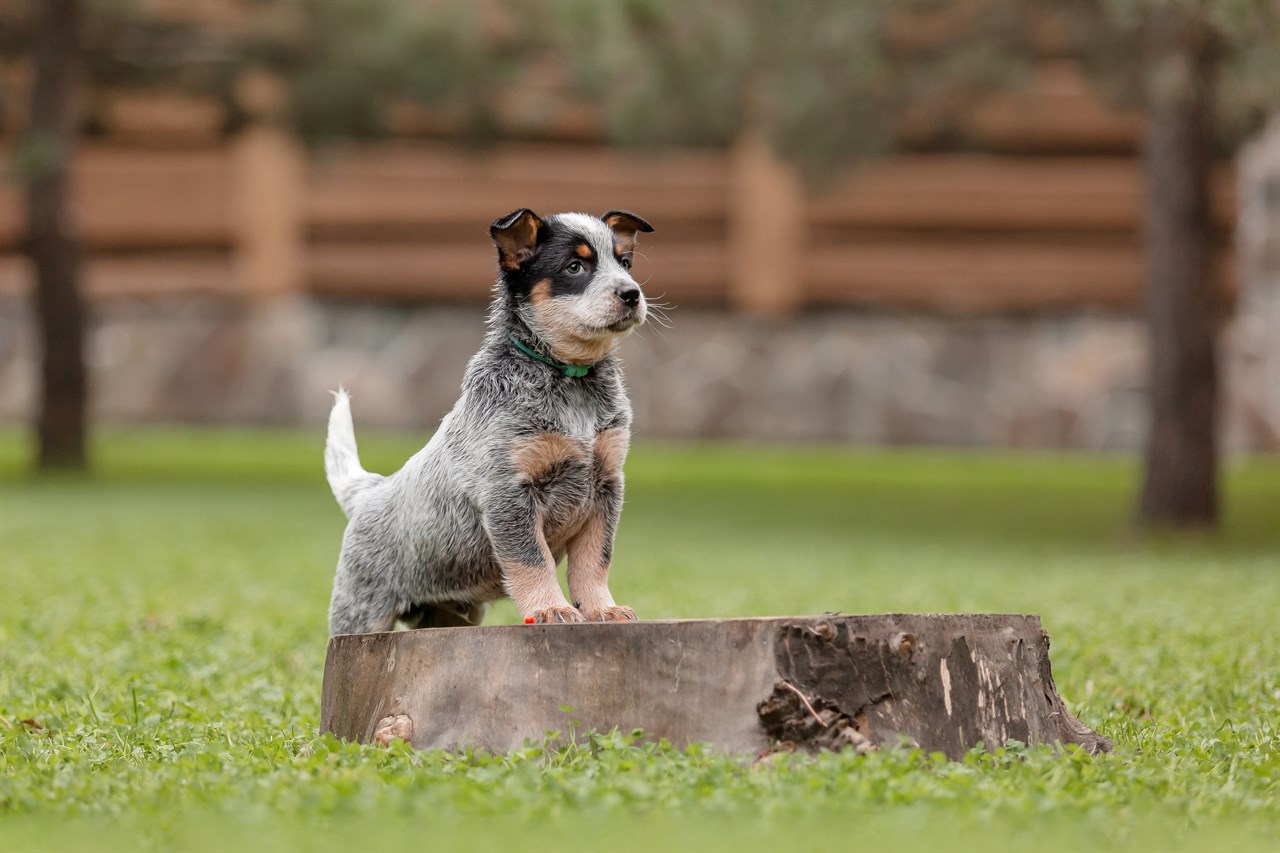The Barking Habits of the Australian Cattle Dog

Australian Cattle Dogs, also known as Blue Heelers, are known for their alert and vigilant nature, which can lead to barking behaviour. Understanding their barking habits and knowing how to manage them is essential for a harmonious relationship with this intelligent and spirited breed.
Alert and Protective Instincts
Cattle Dogs have a strong instinct to protect their family and territory. They are naturally alert and will bark to alert you to potential intruders or unusual occurrences. This protective nature makes them excellent watchdogs.
Vocal Communication
Like many herding breeds, Cattle Dogs use barking as a form of communication. They may bark to get your attention, express excitement, or signal their desire to work or play.
Barking as Herding Behaviour
In their herding role, Cattle Dogs might use barking to move livestock or control their movements. This instinct can carry over into their interactions with family members, where they may exhibit herding behaviours like barking or nipping.
Potential for Excessive Barking
While some level of barking is typical for the breed, Cattle Dogs have the potential to bark excessively if their mental and physical needs are not met. Boredom, anxiety, or lack of stimulation can lead to nuisance barking.
Managing Barking Behaviour
To manage barking in Australian Cattle Dogs effectively, consider the following strategies:
- Exercise and Mental Stimulation: Ensure your Cattle Dog receives sufficient exercise and mental stimulation. A tired dog is less likely to engage in excessive barking.
- Positive Reinforcement Training: Use positive reinforcement techniques to reward quiet behaviour and teach commands like "quiet" or "enough."
- Socialisation: Proper socialisation from a young age can help reduce anxiety-related barking and make your Cattle Dog more comfortable with various situations.
- Address Underlying Issues: If your Cattle Dog's barking is excessive or stems from anxiety, consult with a professional dog trainer or behaviourist to address any underlying issues.
Do Australian cattle dogs bark a lot?
Australian Cattle Dogs have a natural inclination to bark when they perceive a reason to do so, such as alerting their family to potential threats or expressing excitement. While they are not typically excessive barkers, individual variation exists. The amount of barking can be influenced by factors like training, socialisation, exercise, and the dog's environment.
In conclusion, Australian Cattle Dogs have a tendency to bark, which can be attributed to their protective instincts, herding heritage, and communication style. With proper training, socialisation, and meeting their physical and mental needs, you can manage their barking behaviour and enjoy a balanced and well-behaved companion.
Australian Cattle Dog puppies for sale
- Find Australian Cattle Dog puppies for sale in ACT
- Find Australian Cattle Dog puppies for sale in NSW
- Find Australian Cattle Dog puppies for sale in NT
- Find Australian Cattle Dog puppies for sale in QLD
- Find Australian Cattle Dog puppies for sale in SA
- Find Australian Cattle Dog puppies for sale in TAS
- Find Australian Cattle Dog puppies for sale in VIC
- Find Australian Cattle Dog puppies for sale in WA